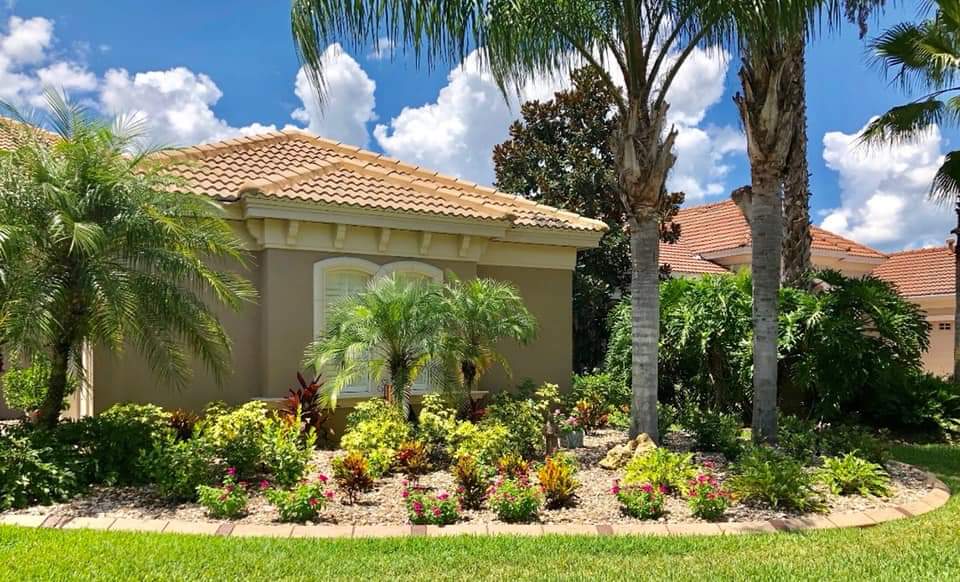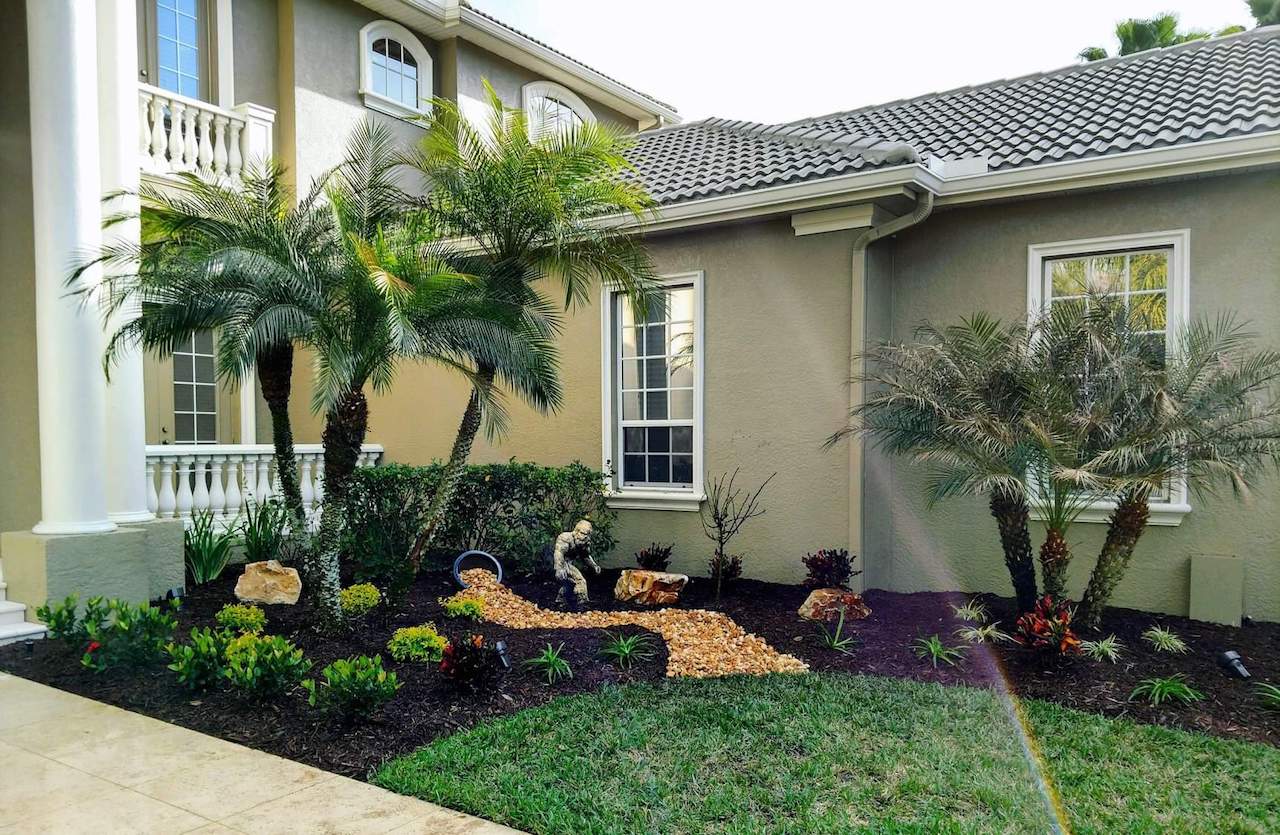A Comprehensive Guide to Designing and Implementing Effective Landscaping Solutions
The art and science of landscape design expand beyond plain aesthetic appeals; they include a thoughtful combination of style concepts, ecological stewardship, and functional execution. An extensive guide to efficient landscape design remedies begins with an extensive understanding of your outdoor room, stressing the significance of unity, proportion, and balance. As we discover sustainable strategies and the choice of appropriate plants, the effects for biodiversity and area wellness end up being significantly noticeable. What methods can one use to make certain these landscapes not just grow however additionally flourish in harmony with their environments?

Recognizing Landscape Style Concepts
One may wonder what foundational elements add to effective landscape layout. At its core, effective landscape layout rests on several crucial concepts that assist the setup and selection of elements within an area. These principles include unity, equilibrium, rhythm, and percentage, each serving to produce an unified outside environment.
Unity describes the cohesive partnership amongst different components, making certain that they collaborate visually and functionally. Balance can be accomplished with asymmetrical or balanced setups, permitting the landscape to really feel secure and welcoming. Percentage involves understanding the range of aspects in connection with each various other and the surrounding setting, promoting aesthetic harmony and convenience.

Assessing Your Outdoor Space
Before carrying out the principles of landscape style, a detailed evaluation of your exterior space is vital. This initial evaluation aids define the extent of your landscape design task and guarantees that your style aligns with the one-of-a-kind attributes of your residential or commercial property. Begin by evaluating the measurements of your room, taking exact measurements to comprehend the readily available area for numerous aspects such as outdoor patios, yards, and pathways.
Next, observe the existing attributes of your landscape, consisting of topography, dirt high quality, and drainage patterns. These factors considerably influence plant option and positioning. In addition, analyze the sunlight direct exposure throughout different areas throughout the day, as this will certainly influence the sorts of plants that thrive in your garden.
Think about the microclimates produced by frameworks, trees, and various other obstacles, as they can impact temperature level and wetness levels. Take note of any type of existing plants or hardscape aspects that you want to retain or get rid of. This extensive assessment lays the foundation for a knowledgeable and reliable landscape design option, making certain that your style is not just cosmetically pleasing yet additionally practical and sustainable for years ahead.
Sustainable Landscape Design Methods
Integrating lasting landscaping techniques is vital for creating an environmentally accountable outdoor room. These methods not only advertise environmental equilibrium but additionally boost the practical and aesthetic value of a landscape. One foundational method is the application of indigenous plants, which call for much less water and maintenance while sustaining regional wildlife. Implementing effective watering systems, such as drip watering, lessens water waste and makes certain that plants get sufficient wetness.

An additional effective technique is the calculated positioning of shrubs and trees to offer all-natural windbreaks and color, thus lowering power expenses (Palm Desert Landscaping). Rain gardens can be incorporated right into the landscape design to take care of stormwater drainage successfully, filtering contaminants prior to they go into rivers
Selecting the Right Plant Kingdoms
Picking the right plants for your landscape is essential to accomplishing both aesthetic appeal and ecological consistency. The procedure starts with an understanding of your neighborhood environment, dirt problems, and the details microenvironments within your landscape. Analyzing elements such as sunlight direct exposure, dampness levels, and existing flora will help you select plants that prosper in your unique setup.
Take into consideration incorporating native plants, as they are well-adapted to neighborhood conditions, require less maintenance, and support regional wildlife. In addition, selecting a diverse selection of see here varieties can enhance biodiversity while decreasing the risk of disease and insect episodes. It is vital to assess the development habits, flowering durations, and seasonal colors of prospective plants to create a vibrant and natural landscape.
In addition, believe regarding the meant use the area; for instance, if the location will experience high foot website traffic, select resilient ground covers. By attentively selecting plants that straighten with both your environmental requirements and aesthetic goals, you can create a sustainable landscape that not only enhances your home yet additionally contributes positively to the bordering ecosystem.

Application and Maintenance Approaches
When the ideal plants have actually been chosen for your landscape, the focus shifts to effective execution and ongoing upkeep methods. Successful installment starts with proper site preparation, which consists of soil testing to establish nutrient levels and pH, complied with by amending the dirt as needed. Meticulously prepare plants according to their growth behaviors and light demands, guaranteeing appropriate spacing to promote healthy development.
Irrigation is an important element of implementation. Establish a watering schedule that takes into consideration the certain demands of each plant varieties, changing for seasonal modifications. Making use of drip watering systems can improve water efficiency and reduce overflow.
Upkeep techniques have to be carried out to make sure the long life and vigor of your landscape. Routine jobs consist of weeding, mulching, and trimming to control growth and protect against disease. Fertilizing must be carried out based on dirt tests, providing the essential nutrients without over-fertilizing.
Checking for illness and insects is important; early discovery special info can avoid considerable damages. Seasonal adjustments to maintenance regimens, such as preparing and winterizing perennials for springtime development, will certainly make sure that your landscape stays healthy and aesthetically appealing year-round.
Verdict
In final thought, effective landscaping services call for a complete understanding of design concepts, meticulous more helpful hints analysis of outside areas, and the application of sustainable methods. The option of ideal plant varieties plays a crucial duty in improving aesthetic charm and environmental strength - Palm Desert Landscaping. Successful execution and recurring upkeep further make certain the durability and vigor of landscapes. By incorporating these aspects, landscapes can be changed into gorgeous, useful settings that promote biodiversity and add favorably to community wellness.
One might wonder what foundational components add to reliable landscape style. At its core, effective landscape design pivots on several essential principles that lead the plan and option of elements within a room.Choosing the right plants for your landscape is important to attaining both aesthetic appeal and ecological consistency. It is essential to review the growth practices, blooming periods, and seasonal colors of potential plants to produce a natural and dynamic landscape.
As soon as the best plants have actually been selected for your landscape, the emphasis moves to reliable execution and recurring upkeep strategies.